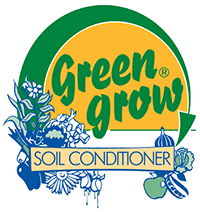

Greengrow

Properties of Greengrow
We call our composted product a soil conditioner rather than a compost, so as not to confuse it with branded growing media – mainly peat-based - that you see in garden centres.
Greengrow improves soil fertility; releases plant nutrients slowly and encourages vigorous plant root systems.
It is a good source of essential trace elements and supports the activity of soil micro-organisms that convert soil nutrients into forms available to plants.
Applications of composted green waste soil conditioner improve soil structure and its ability to hold water.
Laboratory studies have shown that it can give effective control of economically important crop diseases, such as club root on brassicas, white rot on onions, stem canker and black scurf on potatoes.
Typical properties of a composted green waste soil conditioner are shown below. For sources of further information see links below.

Properties of typical composted green waste soil conditioner
| Nutrients | (Total nutrient kg per tonne of moist compost based on typical analysis) | |||
| Nitrogen | Phosphate | Potash | Magnesium | Sulphur |
| as N | as P2O5 | as K2O | as Mg | as S |
| 8.1 | 3.3 | 6.6 | 2 | 1 |
| Potentially Toxic Elements - (Typical values compared with the Composting Association Standard for Composts) | ||||||||
| Element | Cadmium | Chromium | Copper | Lead | Mercury | Nickel | Zinc | Units |
| Typical | 0.71 | 19 | 45 | 108 | 0.17 | 18 | 186 | mg per kg |
| Standard | 1.5 | 100 | 200 | 150 | 1 | 50 | 400 | dry matter |
Other parameters
pH - Around 8.5 (Measures acidity)
Electrical conductivity - Around 770 mS /cm (Measures concentration of soluble salts)
Bulk Density - About 0.6 kg/litre or 1.6m3 per tonne
Loss on Ignition - About 20% (Measures organic matter content)
Carbon: Nitrogen (C:N) ratio - About 12
A good quality composted green waste soil conditioner will contain the odd piece of glass, plastic or other contaminants. These are likely to amount to less than 0.2% by weight in total.
The composting process should eliminate all weed seeds (measured as Viable Seeds or vs per litre). A count of 1 or 2 vs per litre is considered acceptable.
The availability of nitrogen in the product is relatively low compared to say animal manure, but this is important in areas of the country where groundwater is susceptible to infiltration of excessive nitrate (Nitrate Vulnerable Zones as expressed by the Environment Agency).